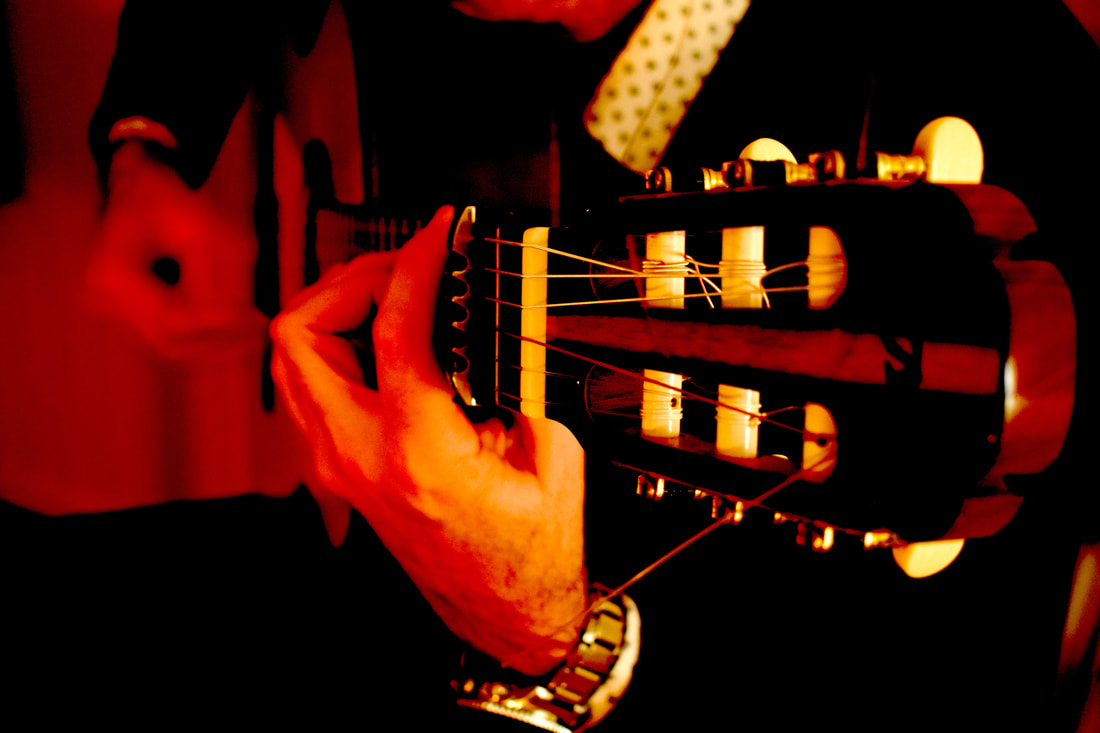Flamenco is a centuries-old art form filled with raw emotions, rhythmic footwork, and the soulful strumming of a guitar. At the core of this genre lies the Flamenco guitar, an instrument that transcends melodies and becomes a storyteller.
Flamenco, rooted in the Andalusian regions of Spain, is an emotional and expressive genre. At its heart is the guitar, a key element that sets the tone for the entire performance. The Flamenco guitar is not just a musical accompaniment; it's a voice that expresses the passion, sorrow, and rhythm, and it´s different in every "palo" (style).
The Flamenco guitar is a straightforward instrument. It's typically made from wood, often with a spruce or cedar top and cypress or sycamore back and sides. This unadorned appearance is intentional, as the focus is on the sound and soul of the music rather than elaborate ornamentation.
What sets the Flamenco guitar apart is its distinct sound. It's sharp, percussive, and expressive, often with a bright and clear tone. The strings are set closer to the fingerboard, allowing for quick and agile fingerpicking, while the body of the guitar is thinner, contributing to its responsiveness and projection.
The Flamenco guitar isn't just about the instrument itself; it's about how it's played. The techniques used in Flamenco guitar playing are as critical as the guitar's design. Some essential techniques include rasgueado (rapid strumming), picado (quick fingerpicking), golpe (tapping the guitar for percussive effects), and alzapúa (thumb techniques). These techniques, combined with the guitar's unique design, create the signature Flamenco sound.
But let´s not forget the importance of the correct posture in order to make execution easier and avoid future injuries.
Flamenco is a complex and diverse genre, divided into different styles called "palos." Each palo has its unique mood, rhythm, and origin. Some well-known palos include Soleá, Alegrias, Bulerías, and Tangos. The choice of palo influences the guitar's tuning and playing style, and the guitarist must adapt to convey the intended emotions of the piece. Let´s take a look at the different palos and their emotions.
Soleá:
Mood: Soleá is often described as "mournful" and "intense."
Emotions: This palo conveys feelings of deep sorrow, solitude, and despair. It's a powerful and emotional style that captures the essence of Flamenco's passionate storytelling.
Alegrias:
Mood: Alegrias is more upbeat and joyful compared to Soleá.
Emotions: Alegrias exudes a sense of celebration and happiness. It's characterized by its lively rhythm and spirited melodies, making it an expression of joy and exuberance.
Bulerías:
Mood: Bulerías is characterized by its fast tempo and complex rhythm.
Emotions: It can be both intense and exhilarating, often featuring lyrics that touch on themes of love, desire, and longing. The mood can shift rapidly from fiery and energetic to contemplative and introspective.
Tangos:
Mood: Tangos have a moderate tempo and are often rhythmically engaging.
Emotions: This style can convey a range of emotions, from yearning and passion to sadness and nostalgia. It's known for its versatile and adaptable nature, making it suitable for various emotional expressions.
Fandangos:
Mood: Fandangos are typically more melodic and lyrical in nature.
Emotions: They often express a sense of nostalgia, longing, and romanticism. Fandangos can convey both joyful and melancholic emotions, making them a versatile style in the world of Flamenco.
Seguiriyas:
Mood: Seguiriyas are characterized by their slow and profound rhythm.
Emotions: This style is known for its deep emotional intensity. It conveys a sense of tragedy, despair, and the weight of life's hardships and death. Seguiriyas are often associated with profound sorrow and introspection.
Rumba:
Mood: Rumba is one of the more lighthearted and festive palos.
Emotions: It's often associated with celebrations, love, and a carefree spirit. Rumbas are characterized by lively rhythms and lyrics that celebrate life, love, and happiness.
Sevillanas:
Mood: Sevillanas are joyful and dance-oriented.
Emotions: They convey feelings of celebration, joy, and camaraderie. Sevillanas are often danced during festive occasions, and their lively melodies and rhythms encourage a sense of togetherness and fun.
These descriptions provide a glimpse into the diverse emotional range of Flamenco music. Each palo serves as a canvas for the expression of profound human emotions, from deep sorrow to exuberant celebration, making Flamenco a genre that resonates with the depths of the human experience.
Learn from a Master Who's Performed for Royalty: Start Your Flamenco Journey Today
- Unlock this article & video library for free
- Join thousands of guitarists who finally got past only 'knowing some basic chords'
- Learn flamenco from a lifelong performer & celebrity teacher from Madrid
- Rafael has taught EOB (Radiohead), Jack Peñate & played for HRH Elizabeth II (etc)
By entering your email you agree to receive email updates from Flamenco With Rafael. See our Privacy Policy.




